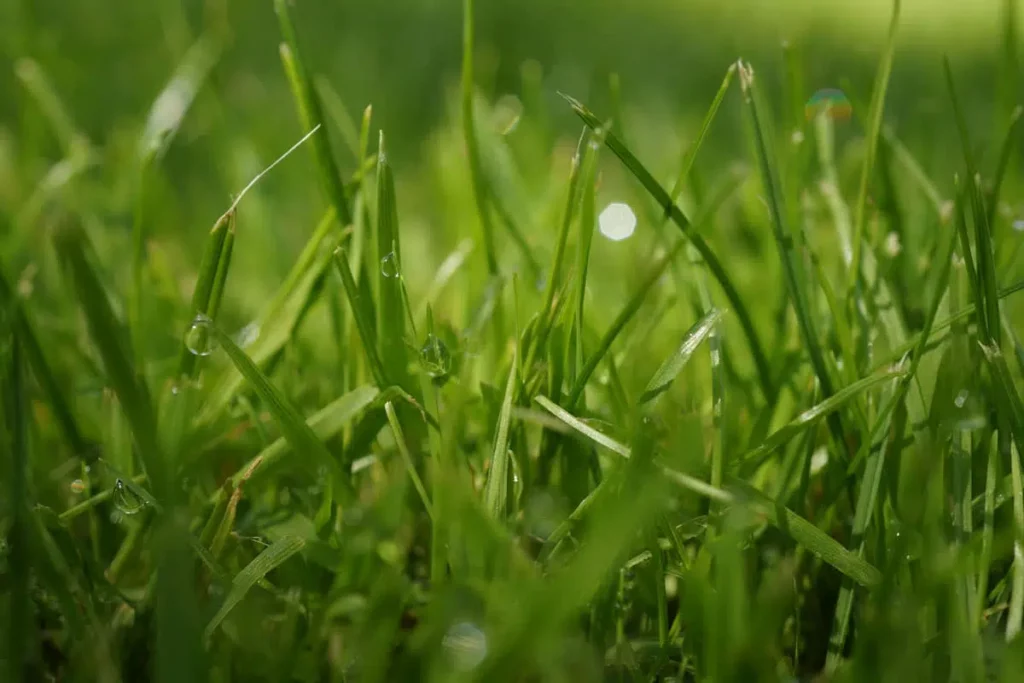How to fertilize properly is already described in detail in the guide. Here you will learn what ingredients and compositions you should pay attention to when fertilizing. This belongs in the lawn fertilizer in the spring.
- In spring, lawns make special demands on the composition of lawn fertilizer.
- ingredients differ in spring fertilization from autumn fertilization
- timely, correct fertilizing in spring for lush lawn green and higher resistance
- Nitrogen, phosphorus, potassium, magnesium and sulfur most important ingredients
Contents
Best time to fertilize
In order to achieve the best possible effect of suitable lawn fertilizer, an application in early spring around the middle/end of March is ideal. The prerequisite is weather conditions that no longer produce prolonged ground frost.
Those who fertilize later than early April risk starting the season with a nutrient deficiency. This can be corrected later with appropriate fertilization, but full recovery may be weeks or months away.
Tip: The ingredients are more quickly available to the lawn if fertilization is done in the evening shortly after a rain shower.
Recommended ingredients
Spring fertilization is all about the right ingredients. The following are essential to help the lawn grow healthy quickly after winter and cold weather stress:
| Ingredient | Features |
|---|---|
| Nitrogen (N) | stimulates growth of green parts of plants strengthens grass healthy growth provides green coloration |
| Phosphorus (P) | acts in the root zone stimulates grass growth intensifies green coloration regulates energy balance ensures uniform growth maintains life-supporting functions |
| Potassium (K) | Regulation and optimization of the water balance “Protective fertilization” strengthens lawn from heat and dryness of summer increased defense and resistance to diseases as a protection against cold also ideal as an autumn fertilizer |
| Magnesium (Mg) | Energy supplier supports photosynthesis processes important component of further metabolic processes |
| Sulfur (S) | optimizes protein metabolism and enzyme formation supports plant growth improves absorption of important nutrients prevents fungal and pest infestations |
In addition, lawn fertilizer often contains a variety of trace elements that have different effects when fertilized in the spring. The best known of these secondary substances are:
Boron (B): to improve shoot and root growth; activates growth hormones.
Iron (Fe): required for chlorophyll build-up; promotes leaf greening through
Calcium (Ca): promotes nutrient uptake by roots and needed for cell walls – caution: increases pH
Copper (Cu): essential for photosynthetic function and chlorophyll formation
Manganese (Mn): improves nitrogen uptake, photosynthesis and enzyme activation; especially to be given in sandy soils
Zinc (Zn): Influences protein metabolism and uniform growth; if phosphorus content is high, zinc uptake is impaired and must therefore be administered in addition; too much zinc prevents iron uptake and must therefore be fertilized only slightly
Composition
For the best possible effect of spring fertilization, an ideal composition of all components is required:
- Nitrogen: 25 to 30 percent share – per square meter, depending on the lawn load, approximately ten to 25 grams.
- Potassium: about 15 percent
- Phosphorus: about ten percent
- Sulfur: about ten percent
- Magnesium: about five percent
- Secondary substances: in equal proportions up to 30 percent total content
Tip: There are fertilizers available on the market that are specially formulated for the particular demands of springtime lawns. If you rely on high-quality fertilizers from renowned brand suppliers, they usually already have the appropriate composition.
Frequently asked questions
Can fall fertilizer also be used for spring fertilization?
No. Suitable fall lawn fertilizer is usually significantly higher in potassium, which is not good for the lawn in March/April. In addition, fall lawn fertilizers rely on very little nitrogen so that the lawn is not stimulated to grow when it is supposed to go into winter dormancy.
Which lawn fertilizer is suitable for reseeding and new lawns in spring?
If lawns are reseeded after winter or have been completely reseeded, a starter fertilizer is recommended. This is a phosphorus-rich composition, while in older lawns nitrogen dominates. In newly established lawns, phosphorus leads to improved “integration” of seeds in the soil and deep root growth of seedlings is favored. Nitrogen would not be beneficial to seedlings in this case because a healthy root system should be in place first before the grass shoots up.
Does the lawn fertilizer replace reseeding in the spring?
It depends on how extensive the lawn’s thinning areas are. Basically, lawn fertilization with the right composition of ingredients strengthens the grass and also stimulates growth in width. Smaller thinnings can be closed tightly in this way without the need for extra reseeding.


